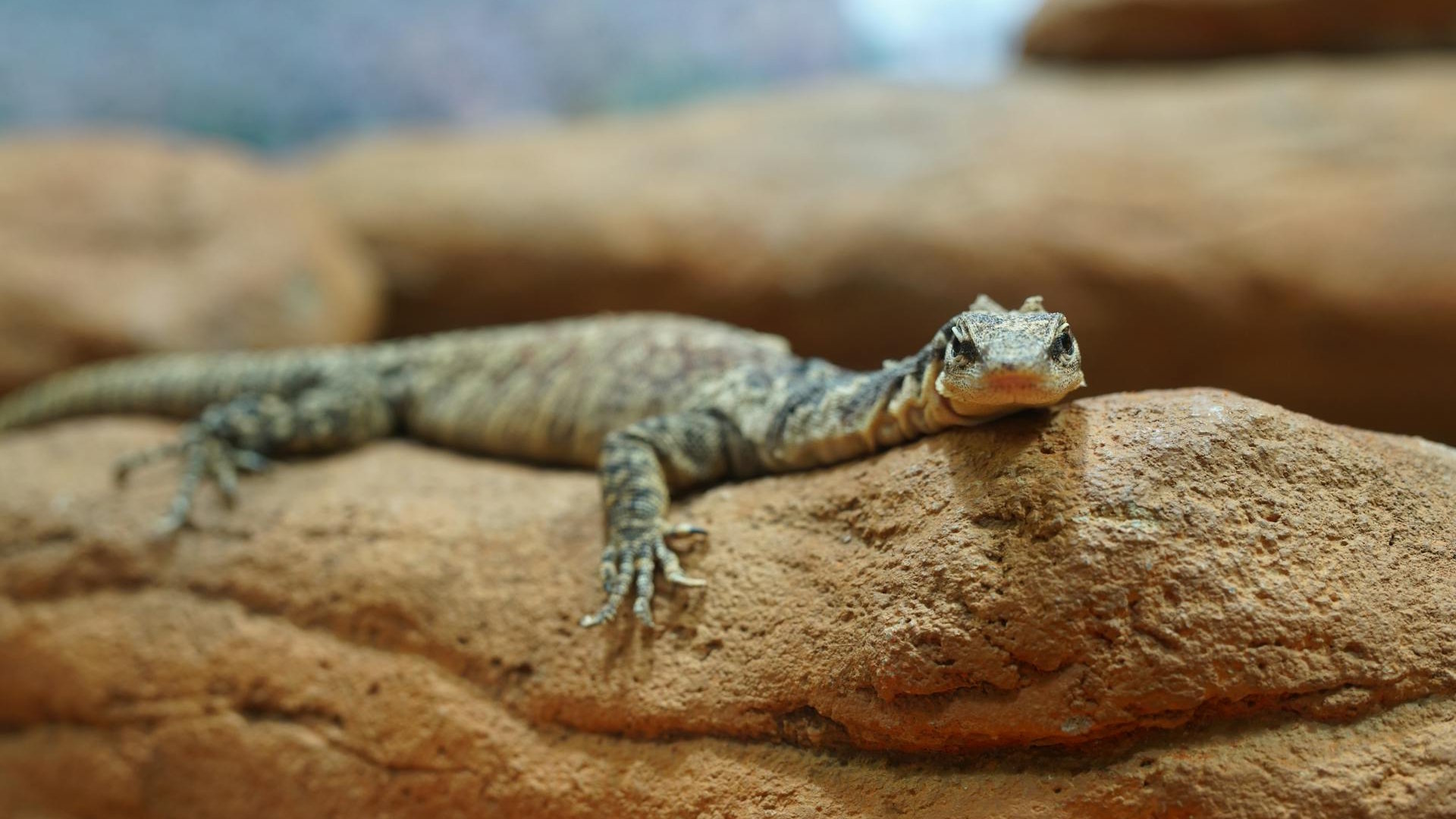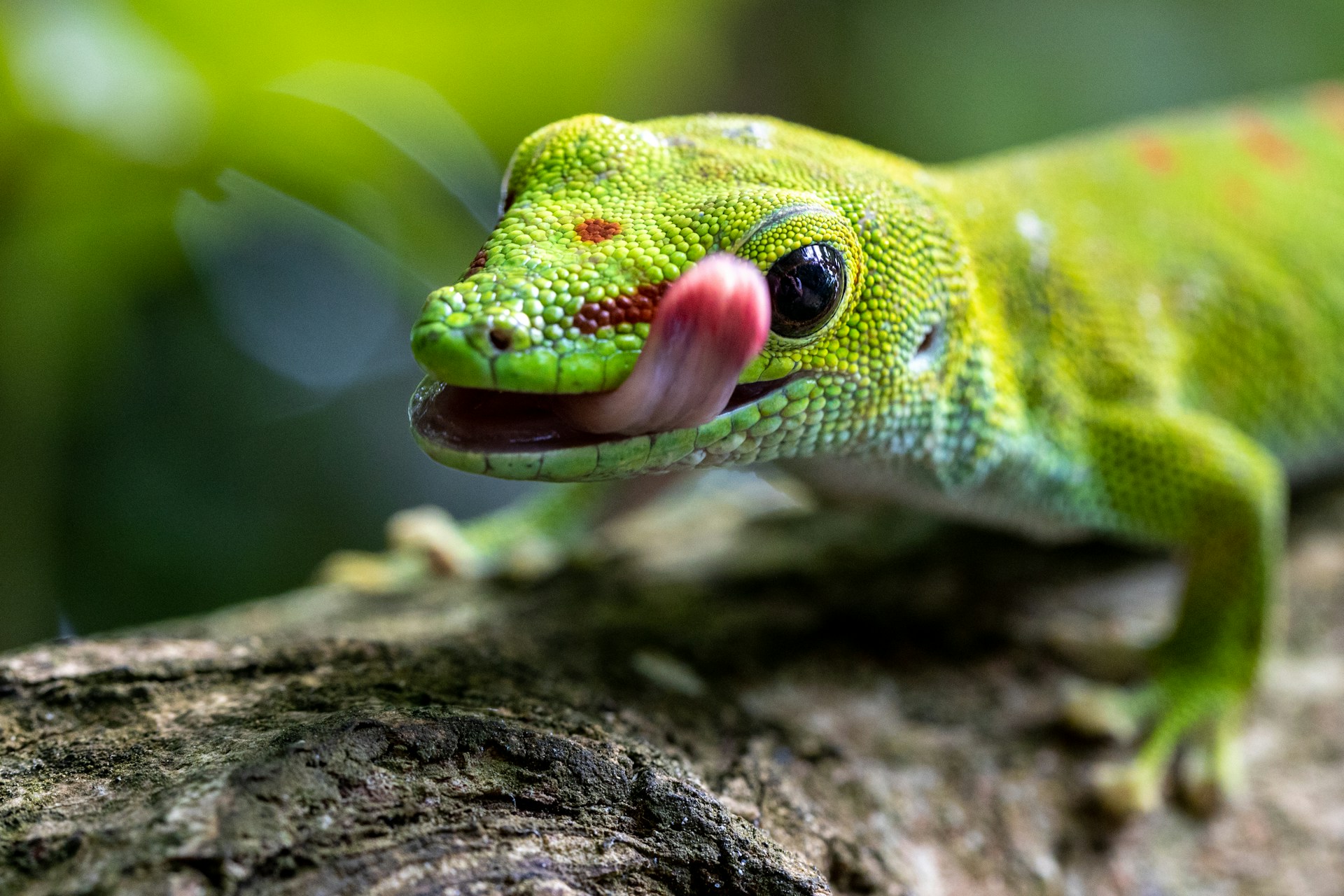Encountering a snake in the wild can be a startling experience, especially when you’re uncertain whether the serpent before you poses a genuine threat. While only about 15% of the world’s 3,000+ snake species are considered dangerous to humans, knowing how to differentiate between venomous and non-venomous snakes could potentially save your life. This knowledge becomes particularly crucial when hiking, camping, or simply spending time in snake-populated areas. This guide will provide you with practical identification methods, behavioral patterns to observe, and safety protocols to follow when encountering snakes in their natural habitats. Remember, the goal isn’t to instill fear but rather to foster respect and understanding of these remarkable creatures while ensuring your safety in the wilderness.
Understanding Snake Venom and Its Dangers
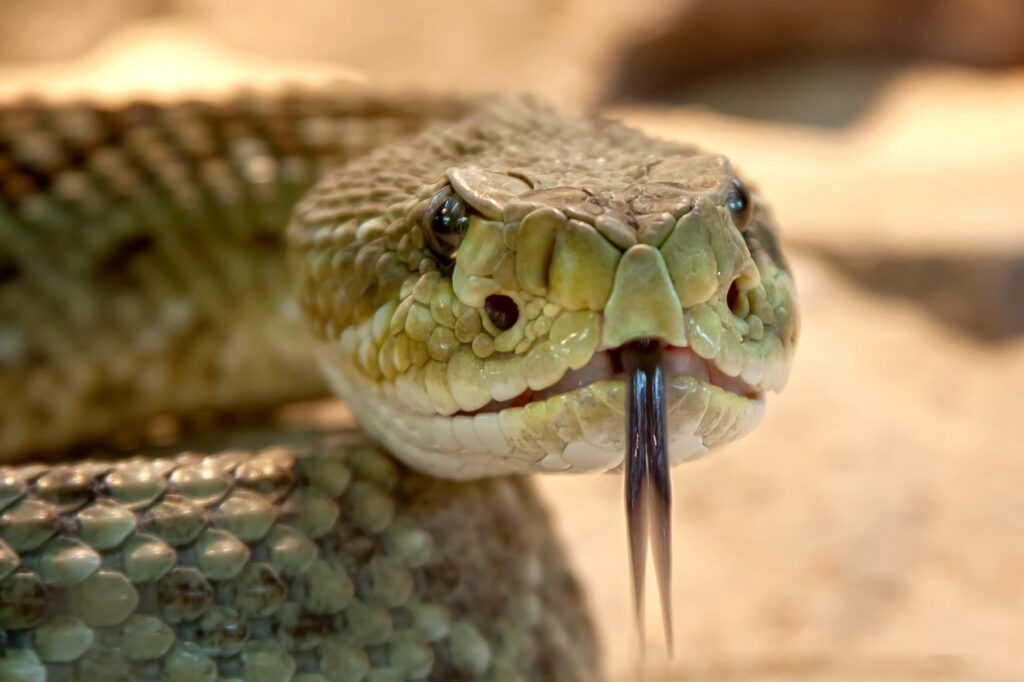
Snake venom is essentially modified saliva containing complex mixtures of proteins and enzymes developed primarily to immobilize prey. Different venomous species produce various types of toxins, which can be broadly categorized as hemotoxic (affecting blood and tissues), neurotoxic (attacking the nervous system), cytotoxic (destroying cells and tissues), or cardiotoxic (impacting the heart). The severity of a venomous bite depends on factors including the species, amount of venom injected, location of the bite, and the victim’s size, health, and individual sensitivity. Even within the same species, venom composition can vary based on geographic location, the snake’s age, and environmental factors. Understanding these fundamentals about venom helps emphasize why proper identification skills are crucial when encountering snakes in the wild.
The Limitations of Common Identification Myths

Before delving into reliable identification methods, it’s important to dispel some dangerous myths about identifying venomous snakes. Contrary to popular belief, venomous snakes don’t universally have triangular heads, as many non-venomous species can flatten their heads when threatened, creating a similar triangular appearance. The pupil shape (elliptical vs. round) is another unreliable indicator, as this varies across species regardless of venom presence, and is often difficult to observe from a safe distance. Similarly, the old rhyme “red touch yellow, kill a fellow; red touch black, venom lack” only applies to coral snakes in certain regions of North America and is dangerously misleading when applied globally. Relying on these oversimplified “rules” can create a false sense of security or unnecessary fear when encountering snakes in the wild.
Regional Awareness: Know Your Local Venomous Species
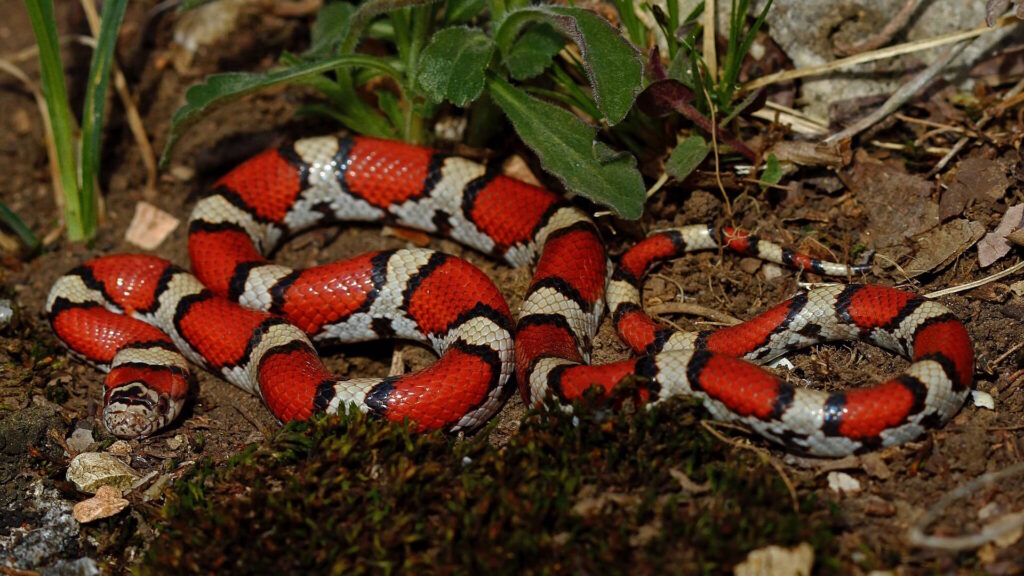
The most practical first step in snake identification is familiarizing yourself with the venomous species native to your region or areas you plan to visit. North America hosts relatively few venomous species, primarily pit vipers (rattlesnakes, copperheads, and cottonmouths) and coral snakes, making identification more manageable. Australia, in contrast, is home to some of the world’s most venomous species, including the inland taipan and eastern brown snake. Southeast Asia harbors numerous kraits, cobras, and vipers, while Africa features mambas, adders, and vipers among its venomous inhabitants. Before any outdoor excursion, research the specific venomous snakes in that area, learn their distinctive features, preferred habitats, and typical behaviors. Many wildlife departments and park services offer guides specific to local species, which can be invaluable resources for region-specific identification.
Identifying Pit Vipers: The Heat-Sensing Specialists

Pit vipers, which include rattlesnakes, copperheads, and cottonmouths in North America, possess distinct features that aid in their identification. Most notably, they have heat-sensing pits located between each eye and nostril, giving them their name and allowing them to detect warm-blooded prey with remarkable precision. While these pits may not be visible from a safe distance, other characteristics can help with identification. Many pit vipers display a somewhat triangular head that’s distinctly wider than their neck, vertical (elliptical) pupils similar to cat eyes, and relatively thick, heavy bodies with keeled scales that appear rough rather than smooth. Rattlesnakes additionally feature the iconic rattle segments at the tail end, though young specimens may have only a button and some species can lose their rattles. Remembering that pit vipers tend to have a more robust, angular appearance compared to most non-venomous snakes can be a helpful general guideline.
Recognizing Elapids: Cobras, Mambas, and Coral Snakes

Elapids constitute another major family of venomous snakes, including cobras, mambas, kraits, and coral snakes, characterized by fixed, hollow fangs at the front of the mouth. Unlike pit vipers, many elapids have slender bodies and heads that aren’t dramatically wider than their necks, making them sometimes difficult to distinguish from non-venomous species based on body shape alone. Cobras are most recognizable by their ability to spread their neck ribs to form the famous hood when threatened, while mambas are known for their exceptional speed and size, particularly the black mamba which can reach lengths exceeding 14 feet. Coral snakes employ aposematic (warning) coloration with bright bands of red, yellow/white, and black, though the specific pattern arrangement varies by species and region. Many elapids have round pupils and smooth scales, demonstrating why simplified identification “rules” often fail when applied across different snake families.
Sea Snakes: Venomous Dangers of the Ocean
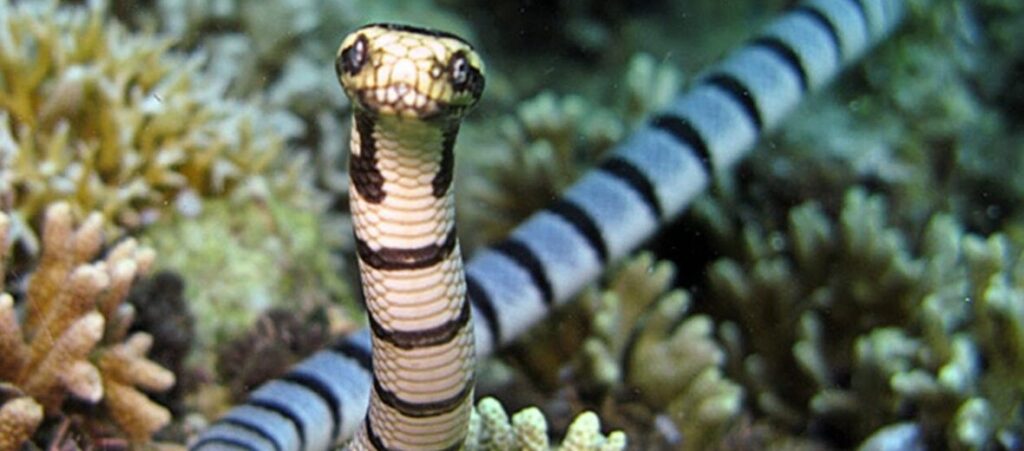
Sea snakes represent a highly specialized group of venomous serpents adapted to marine environments, with most species possessing extremely potent venom. Fortunately, they’re typically found in coastal waters of the Indo-Pacific region and aren’t encountered by most land-based hikers or campers. These aquatic reptiles can be identified by their paddle-shaped tails which aid in swimming, valved nostrils that close underwater, and generally flattened bodies compared to land snakes. Most sea snakes have distinctive banded patterns in contrasting colors, though some species display solid coloration. Despite possessing highly toxic venom, sea snakes are generally not aggressive toward humans and typically only bite when handling them or stepping on them in shallow waters. If you’re engaging in activities like snorkeling or diving in regions where sea snakes are present, maintain a respectful distance and never attempt to touch or capture these marine animals.
Behavior and Habitat Clues for Identification

Snake behavior and habitat preferences can provide valuable additional clues for identification when physical characteristics are difficult to observe from a safe distance. Many venomous snakes, particularly pit vipers, are ambush predators that often remain motionless for long periods, blending seamlessly with their surroundings while waiting for prey. Rattlesnakes may give their distinctive warning rattle when threatened, though silence doesn’t guarantee the absence of a rattlesnake. Water moccasins (cottonmouths) are frequently found near water and can often be seen swimming with their heads held high above the water surface, while many non-venomous water snakes swim with just their heads showing. Habitat can also provide contextual clues – for example, in North America, finding a snake basking on an open rocky outcrop in a mountainous area increases the likelihood of it being a rattlesnake. However, behavior and habitat should always be considered alongside physical characteristics rather than used as standalone identification methods.
The Importance of Safe Observation Distance

When attempting to identify a snake in the wild, maintaining an appropriate distance is absolutely crucial for safety. Most venomous snakes can strike at a distance of up to half to two-thirds of their body length, with some species like king cobras and black mambas capable of striking even further. A minimum safe distance of at least 6 feet (approximately 2 meters) is recommended, with greater distances advised for larger specimens. Modern smartphones with zoom capabilities or binoculars can allow for detailed observation without requiring dangerous proximity. If you need to move around a snake to continue on your path, give it a wide berth and never attempt to move, touch, or otherwise disturb the animal, regardless of whether you believe it to be venomous or not. Remember that even correctly identified non-venomous snakes can inflict painful bites if they feel threatened, and misidentification can have potentially fatal consequences.
Technology Aids: Snake Identification Apps

Modern technology offers valuable tools for snake identification in the field, with several smartphone applications now available to assist with rapid species recognition. Apps like Snake ID, iNaturalist, and regional wildlife identification applications utilize photo recognition algorithms or guide users through identification keys to help determine species. Many of these applications work offline, which is particularly useful in remote areas where cellular service may be unavailable. Some advanced options even allow users to submit photos for verification by herpetology experts when automated identification is uncertain. While these technological aids can be tremendously helpful, they should complement rather than replace traditional knowledge and caution. No identification app is 100% accurate, and limitations in photo quality, lighting conditions, or unusual color morphs can lead to misidentification. Always err on the side of caution even when technology suggests a snake is harmless.
What to Do If You Encounter a Snake
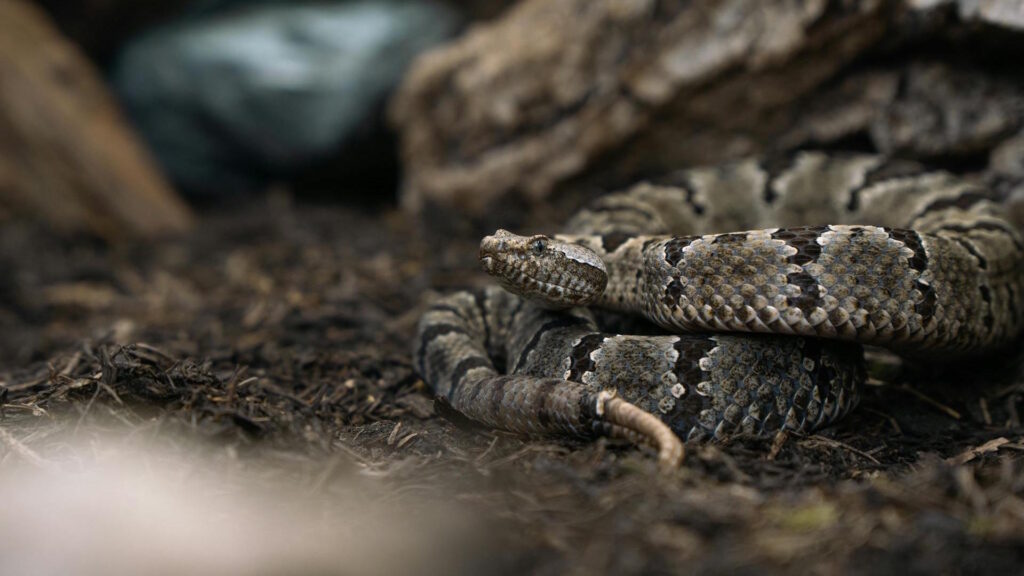
Encountering a snake in the wild calls for calm, measured responses regardless of whether you can identify the species. Your first action should be to freeze momentarily to assess the situation and the snake’s location, as sudden movements might startle the animal into defensive behavior. Slowly back away, maintaining a safe distance of at least 6 feet (2 meters) or more, and never attempt to approach, handle, or provoke the snake, even if you believe it to be non-venomous. If the snake is blocking your path, either wait patiently for it to move along naturally or find an alternative route around it, giving the animal plenty of space. Keep children and pets away from the area, as they may not understand the potential danger. Remember that most snakes, including venomous species, prefer to avoid human encounters and will typically retreat if given the opportunity and not feeling cornered or threatened.
Preventative Measures While Hiking or Camping

Taking proactive steps to minimize snake encounters can significantly reduce your risk during outdoor activities. Wearing appropriate protective clothing is a primary defense – closed-toe shoes or hiking boots, thick socks, and loose-fitting long pants can provide crucial protection against potential bites, especially when venturing through tall grass, rocky areas, or dense underbrush. Stay on established trails whenever possible, as snakes are more likely to be encountered in undisturbed natural areas. When setting up camp, choose open, cleared areas and inspect your site thoroughly before establishing your sleeping area. Always use a flashlight when walking at night, as many snake species are nocturnal and more active after dark. Before placing hands or feet in concealed areas like rock crevices, woodpiles, or dense vegetation, use a walking stick or tool to probe the area first. Maintaining awareness of your surroundings and respecting wildlife habitats is the foundation of snake bite prevention.
Emergency Response to Snake Bites
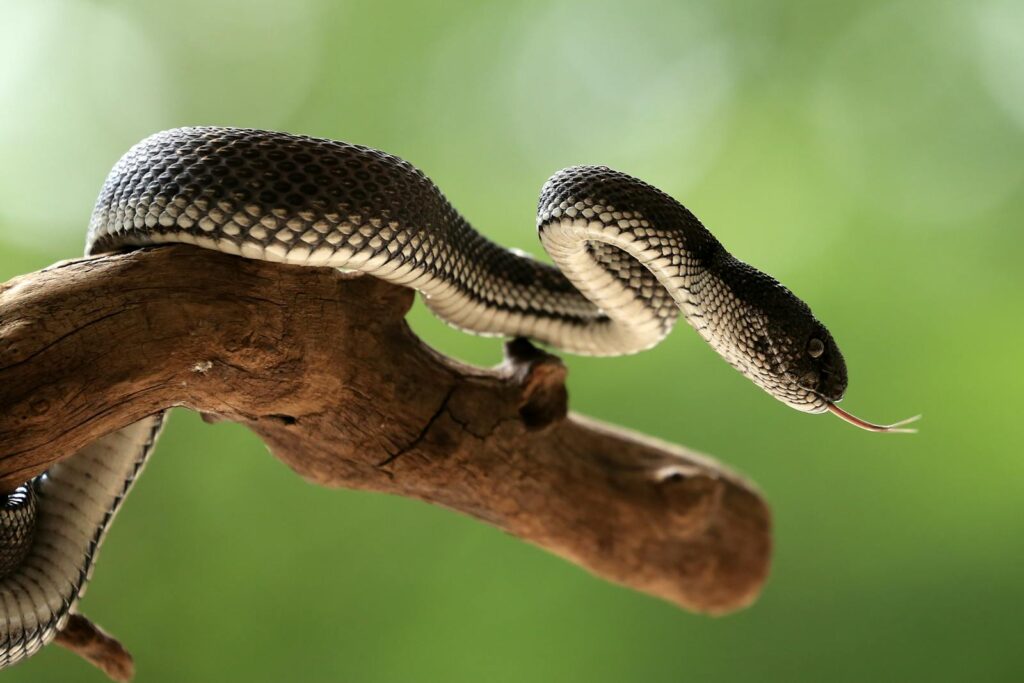
Despite all precautions, snake bites can still occur, making knowledge of proper emergency response potentially life-saving. If bitten, it’s crucial to move away from the snake to prevent additional bites and then keep the affected limb immobilized and positioned below heart level to slow venom spread. Remove any jewelry or tight clothing near the bite area before swelling begins, and mark the leading edge of swelling on the skin to monitor its progression. Modern first aid recommendations explicitly advise against outdated and harmful practices such as cutting the wound, attempting to suck out venom, applying tourniquets, or using ice. Instead, focus on keeping the victim calm to slow heart rate and arranging immediate medical transportation to the nearest hospital with antivenom capabilities. If possible, take a photo of the snake from a safe distance for identification purposes, but never risk additional bites by attempting to capture or kill the snake.
Teaching Children About Snake Safety

Educating children about snake safety requires balanced messaging that instills appropriate caution without creating unnecessary fear or fascination that might lead to dangerous behaviors. The fundamental rule to teach children is straightforward – never approach or touch any snake encountered in the wild, regardless of appearance. Establish clear guidelines about immediately alerting an adult when spotting a snake rather than investigating independently. Create age-appropriate identification lessons for local venomous species through picture books, educational videos, or supervised visits to zoos and nature centers with professional guidance. Practice scenario-based learning where children can rehearse proper responses to hypothetical snake encounters, reinforcing the importance of maintaining distance and seeking adult assistance. Emphasizing that snakes play vital ecological roles and generally avoid human interaction can help develop respect for these animals while still maintaining necessary safety boundaries.
Responsible Attitude Toward Snake Conservation

While learning to identify venomous snakes is crucial for safety, it’s equally important to cultivate respect for these animals and their ecological importance. Snakes of all species play vital roles in controlling rodent populations, limiting the spread of diseases, and maintaining balanced ecosystems as both predators and prey in the food web. Many snake species worldwide face population declines due to habitat destruction, road mortality, deliberate killing due to fear, and illegal collection for the pet and medicinal trades. Responsible outdoor enthusiasts should never kill snakes encountered in the wild, even venomous species, as they have a right to exist in their natural habitats. If a venomous snake poses a legitimate safety concern near human habitation, contact local wildlife authorities who can safely relocate the animal rather than attempting to handle or harm it. Supporting snake conservation efforts and educating others about these misunderstood animals contributes to both ecological health and human safety through increased knowledge and decreased fear-based reactions.
Conclusion

Snake identification is a valuable skill that balances healthy respect with appropriate caution when exploring nature. By learning to recognize the venomous species in your region, understanding their behavioral patterns, and practicing preventative measures, you significantly reduce your risk of dangerous encounters. Remember that most snakes—even venomous ones—prefer to avoid humans and will not attack unless they feel threatened. The most effective approach combines knowledge with distance: learn to identify local species from afar and always give any snake you encounter plenty of space. This respectful coexistence allows us to enjoy the natural world safely while acknowledging the important ecological roles these remarkable reptiles play in healthy ecosystems.


